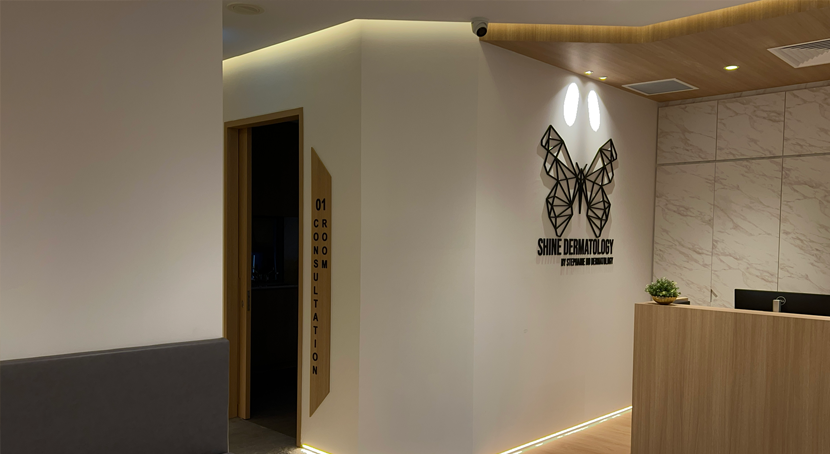What Are Pigmentation Treatments?
Pigmentation treatments aim to reduce excess melanin or remove pigment deposits using medical-grade topical agents, systemic oral therapies, and laser technologies. Treatments are tailored based on pigmentation depth (epidermal vs. dermal), skin tone (Fitzpatrick classification), and contributing factors such as hormonal imbalance, inflammation, or sun damage.
Treatment Modalities:
-
Topical Creams: Inhibit melanin synthesis and accelerate cell turnover.
-
Oral Medications: Address systemic triggers like hormonal fluctuations and oxidative stress.
-
Laser Therapies: Break down pigment clusters and stimulate skin renewal.
How Do Pigmentation Treatments Work?
Pigmentation therapies disrupt melanin production (melanogenesis) and accelerate pigment removal. Hydroquinone inhibits tyrosinase, a key enzyme in melanin synthesis. Retinoids boost cell turnover to shed pigmented cells. Glutathione and polypodium leucotomos act as antioxidants, reducing UV-induced oxidative stress. Tranexamic acid inhibits plasmin activity, reducing melanocyte stimulation. Lasers such as PicoWay use photoacoustic pulses to break pigment into nanoparticles, while Sylfirm X addresses vascular and dermal triggers contributing to melasma.
Key Treatments & Targeted Applications
Treatments are selected based on the pigmentation type, cause, and depth:
1. Prescription Topical Creams
-
Ingredients: Hydroquinone (2–4%), tretinoin, azelaic acid (15–20%)
-
Indications: Epidermal melasma, sunspots, PIH
-
Protocol: Nightly application for 3–6 months, followed by tapering
-
Note: Triple therapy (hydroquinone + steroid + retinoid) is gold-standard for melasma.
2. Oral Therapies
-
Glutathione: 500–1000 mg/day for oxidative stress reduction and skin brightening
-
Polypodium leucotomos: Fern extract with photoprotective and antioxidant effects
-
Tranexamic Acid: 250–500 mg twice daily for hormonal or vascular melasma
-
Protocols: 3–6 months of consistent use, with medical supervision
3. PicoWay Laser
-
Mechanism: Picosecond pulses (532 nm and 1064 nm) shatter melanin for lymphatic clearance
-
Indications: Dermal pigmentation, nevus of Ota, PIH
-
Protocol: 3–5 sessions, spaced 4 weeks apart
4. Sylfirm X
-
Technology: Dual-wave RF microneedling (pulsed for vascular targets, continuous for remodeling)
-
Indications: Vascular melasma, rosacea, PIH, skin laxity
-
Protocol: 3–6 sessions, 4–6 weeks apart
When to Consider Pigmentation Treatment
Treatment is advised when pigmentation affects appearance, confidence, or signals underlying issues. Early treatment of melasma is important to prevent worsening. Solar lentigines and PIH respond well to prompt intervention. Patients with genetic pigmentation or sun damage may also benefit from preventive or corrective care.
Common Conditions Treated:
-
Melasma: Hormonal pigmentation, often recurrent
-
Solar Lentigines: Age spots caused by UV exposure
-
PIH: Marks following acne, eczema, or trauma
-
Genetic Pigmentation: Nevus of Ota, Hori’s macules
Recommended Sessions & Recovery
Topicals
-
Timeline: 8–12 weeks for visible results; continued use for 3–6 months
-
Rotation: Cycle hydroquinone with niacinamide to avoid ochronosis
Oral Medications
-
Glutathione: 500 mg twice daily
-
Polypodium leucotomos: 1–2 capsules daily
-
Tranexamic Acid: 250–500 mg twice daily for up to 6 months
Lasers
-
Sessions: 4–6 sessions spaced 4 weeks apart
-
Recovery: Mild redness/swelling for 2–3 days
-
Post-care: SPF 50+, gentle cleansing, avoid actives
Potential Risks & Safety Measures
Treatment should be supervised by dermatologists to reduce risks:
Topicals
-
Hydroquinone: Risk of ochronosis with prolonged use
-
Management: Cycle with azelaic acid or niacinamide
Oral Therapies
-
Tranexamic Acid: Avoid in thrombosis-prone patients; monitor BP and clotting profile
-
Glutathione: Not recommended during pregnancy; may cause bloating
Lasers
-
Risk: PIH in darker skin tones
-
Management: Use low-fluence settings, pretreatment with tyrosinase inhibitors
FAQs
-
When will I see results from topical creams?
4–8 weeks initially; full results in 3–6 months with daily SPF 50+ use -
Is tranexamic acid a permanent cure for melasma?
No. It controls triggers but recurrence is possible without maintenance -
Are lasers safe for darker skin?
Yes, with low-fluence PicoWay/Nd:YAG lasers and pre-treatment stabilization -
Can I combine glutathione with topicals?
Yes. It enhances outcomes when used with vitamin C and brightening agents -
Best regimen for hormonal melasma?
Tranexamic acid + triple therapy cream + laser + sun protection -
Post-laser maintenance tips?
Use SPF 50+, avoid hormonal triggers, continue lightening agents -
Alternatives to hydroquinone?
Azelaic acid, kojic acid, niacinamide -
Can I undergo treatment during pregnancy?
Avoid retinoids, glutathione, and tranexamic acid. Use azelaic acid and physical sunscreens -
How does PicoWay differ from traditional lasers?
Picosecond pulses minimize heat damage, making it safer for darker skin -
What does polypodium leucotomos do?
Offers photoprotection and antioxidant support to reduce pigmentation risk
Why Trust Shine Dermatology?
Shine Dermatology combines expertise with state-of-the-art technologies to provide safe, effective pigmentation solutions. All treatments comply with Singapore’s HSA regulations and are delivered by certified dermatologists.
Book Your Consultation Today
Let us help you design a personalized treatment plan to achieve clear, radiant skin.



